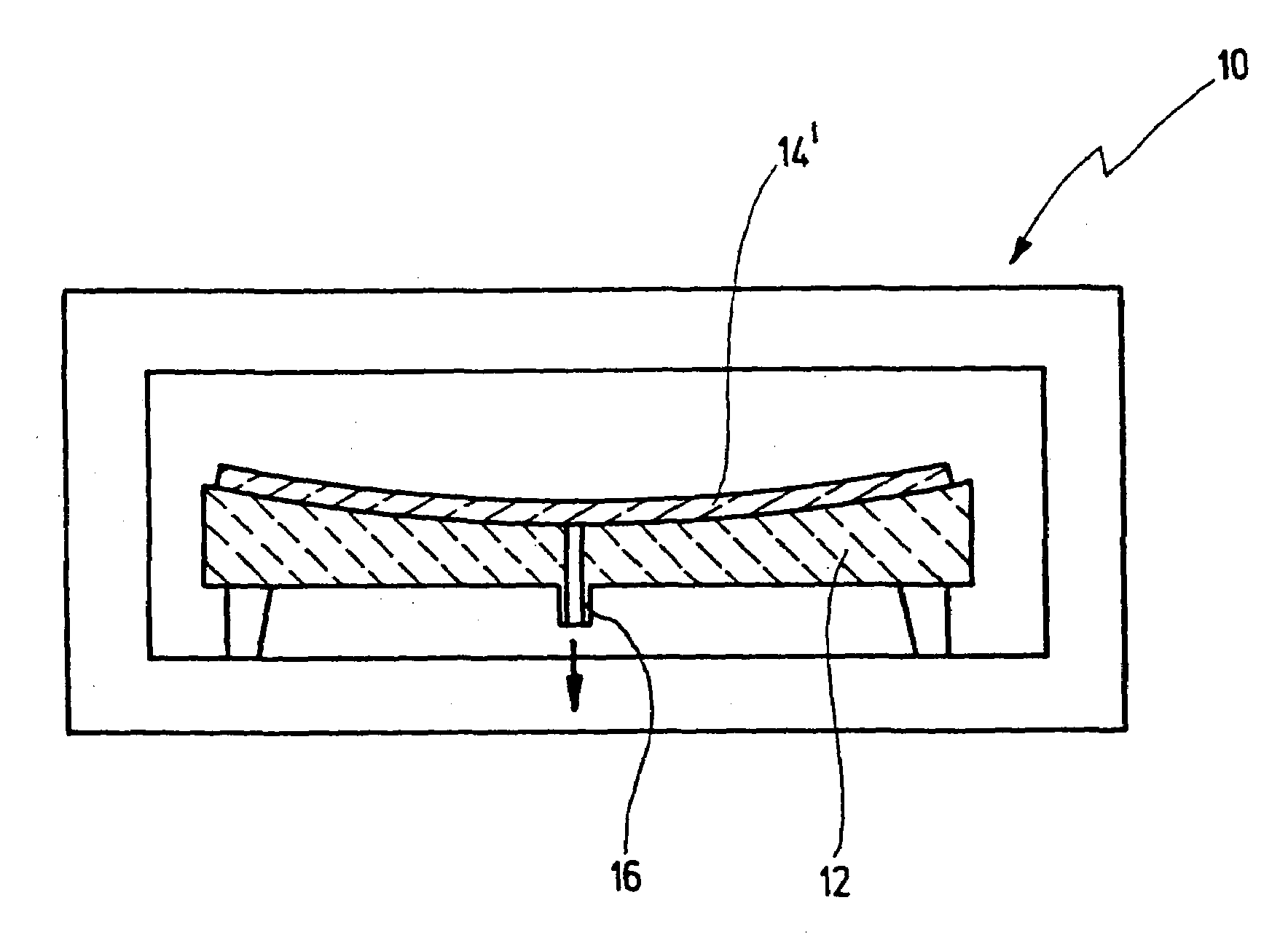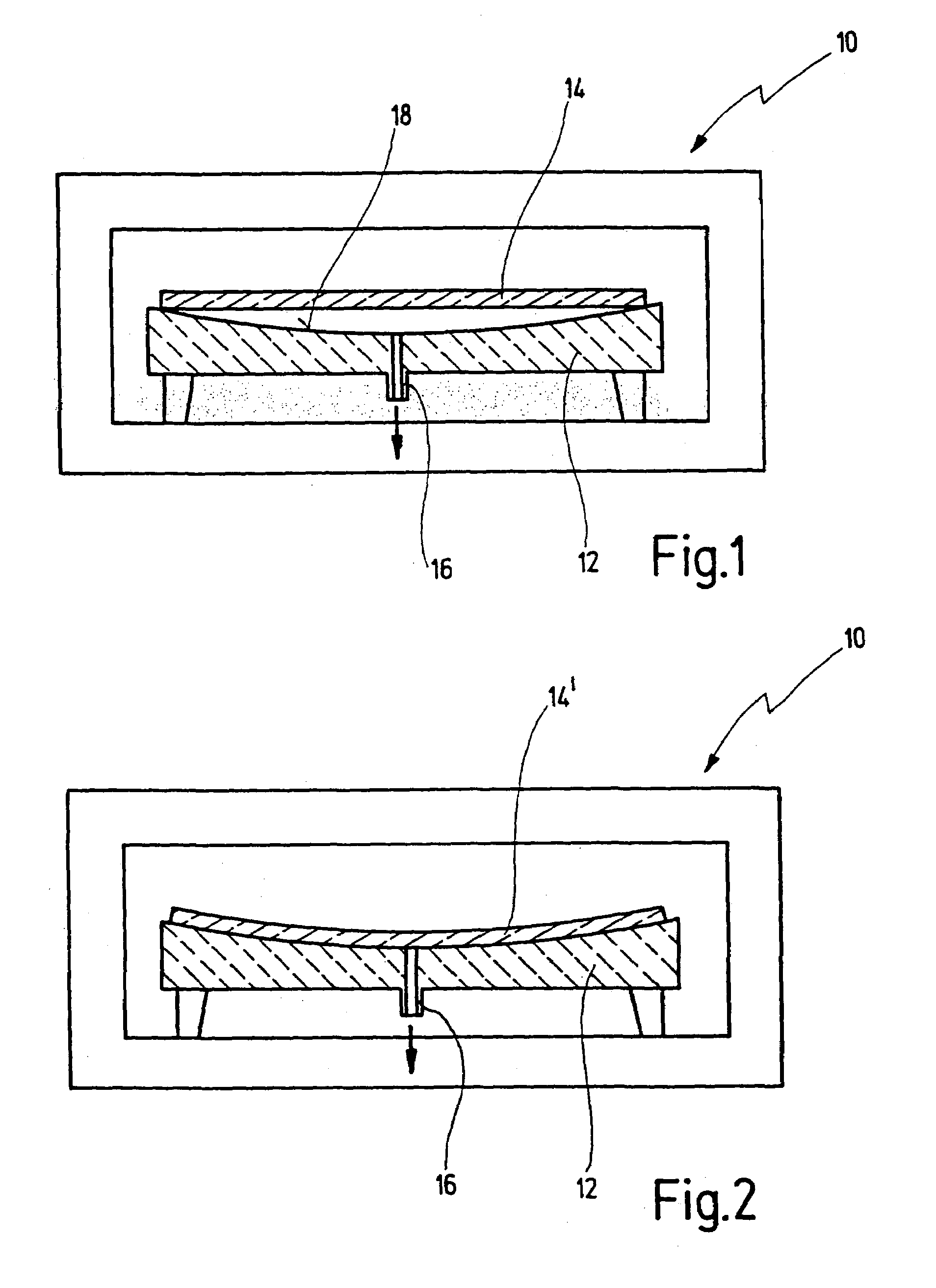Method for the forming of glass or glass ceramics
a technology of glass or glass ceramics and forming methods, which is applied in the direction of glass blowing apparatus, glass making apparatus, glass shaping apparatus, etc., can solve the problems of high cost of quartz mold manufacturing, inability to manufacture sintered ceramic molds in particular inability to manufacture quartz molds at large dimensions with the necessary form precision and precision, etc., to achieve good homogeneity and improve precision
- Summary
- Abstract
- Description
- Claims
- Application Information
AI Technical Summary
Benefits of technology
Problems solved by technology
Method used
Image
Examples
example
[0088]A base glass comprising the following components (in weight percent) was molten:
[0089]
SiO255.50Al2O325.30P2O57.90Li2O3.70Na2O0.50MgO1.00ZnO1.40TiO22.30ZrO21.90As2O30.50.
[0090]This corresponds to a possible composition of the glass ceramic sold by the applicant under the trademark ZERODUR® (glass ceramic). The base glass manufactured in this way after refining was cast into a blank glass block and thereafter ceramized by controlled crystallization, while utilizing a temperature program. To this end initially heating up to 730° C. was performed at 0.1 K / min, 730° C. were maintained for a time period of 24 hours, subsequently heating up to 850° C. was performed at 0.1 K / min, this followed by a further holding at 850° C. for 48 hours, this followed by a slow cooling to room temperature at 0.1 K / min.
[0091]Depending on the size of the glass ceramic block this temperature profile must be adjusted accordingly to yield a high precision crack-free glass ceramic having a high quartz mixe...
PUM
| Property | Measurement | Unit |
|---|---|---|
| temperature | aaaaa | aaaaa |
| temperature | aaaaa | aaaaa |
| temperatures | aaaaa | aaaaa |
Abstract
Description
Claims
Application Information
 Login to View More
Login to View More - R&D
- Intellectual Property
- Life Sciences
- Materials
- Tech Scout
- Unparalleled Data Quality
- Higher Quality Content
- 60% Fewer Hallucinations
Browse by: Latest US Patents, China's latest patents, Technical Efficacy Thesaurus, Application Domain, Technology Topic, Popular Technical Reports.
© 2025 PatSnap. All rights reserved.Legal|Privacy policy|Modern Slavery Act Transparency Statement|Sitemap|About US| Contact US: help@patsnap.com


